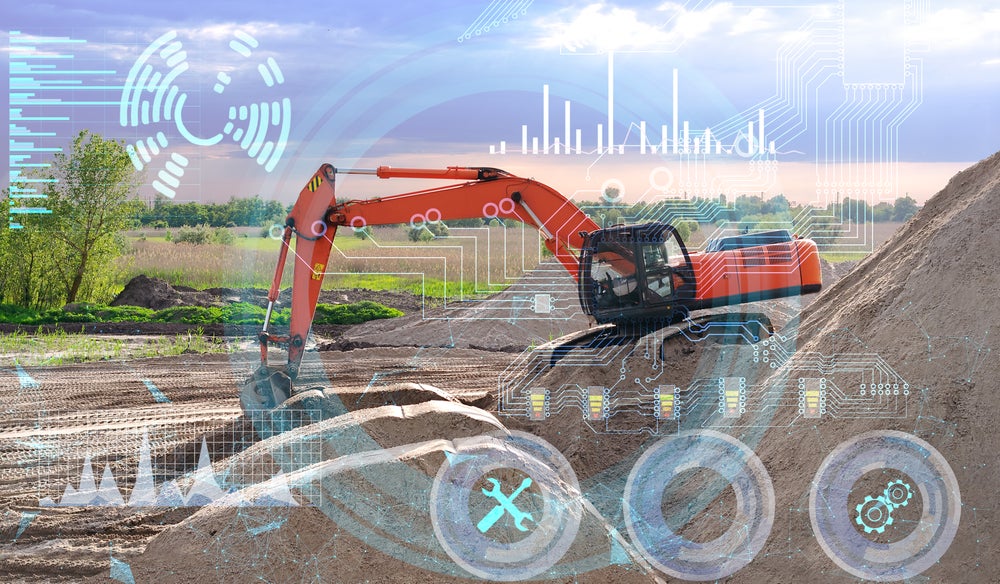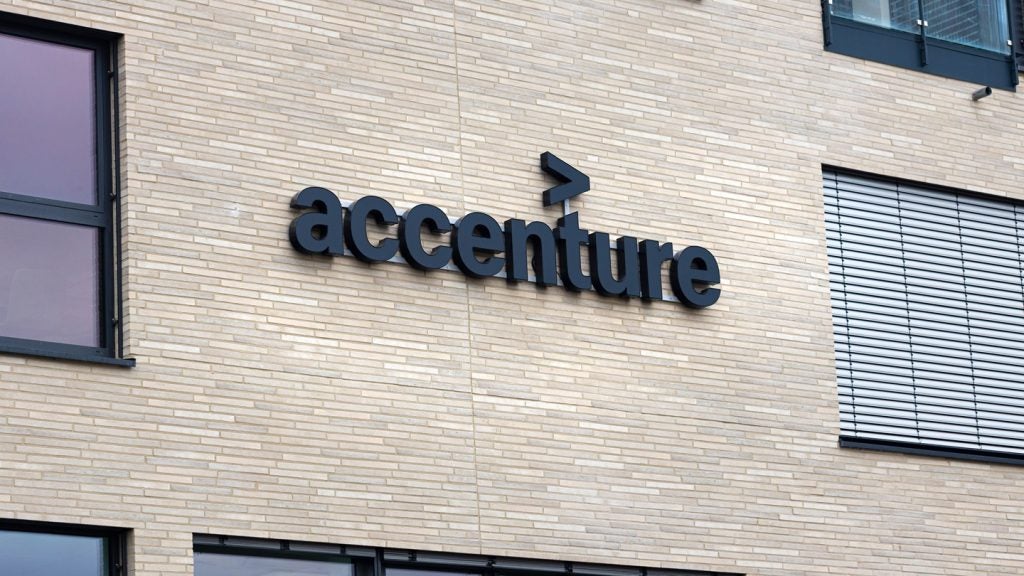
Almost every industry has embraced some form of AI technology over the last two years. And venture capital investment in vertical AI is booming. But within these vertical industries, the construction industry remains in its own “Internet 1.0” era, according to Patric Hellermann, founding general partner at built environment venture capital firm Foundamental.
“As a technology investor and founder, this is a very exciting time. Imagine if you could’ve invested in those tech firms shaping the world today during the 1990s,” says Hellermann who draws a direct comparison between the halcyon days of tech investing in early Big Tech to today’s construction industry investing environment.

Access deeper industry intelligence
Experience unmatched clarity with a single platform that combines unique data, AI, and human expertise.
“A lot of infrastructure in terms of interconnected digital workflows are still being laid. The human adoption behaviours are still being built,” he says.
Hellermann has a view on where AI should be applied within the construction industry and, in particular, where it should be used first. “In white collar workflows, for GC’s [general contractors], the bidding and estimation workflow as well as the financial back office are interesting insertion points for AI.”
“In blue collar execution, the AI enabling on-site robotics is a highly promising area for us. We observe a lot of activity in AI for document and contract intelligence – but it is a crowded market with very little room for differentiation, and the feedback from contractors is not indicating a huge value add so far,” says Hellerman.
Foundamental has seen a lot of founders target AI features for 3D and 2D design and planning. But Hellerman says that the bigger opportunity at this stage is re-imagining authoring design tools like Snaptrude, as well as the data infrastructure like tools such as Speckle, which are more likely to eat up many of those design and planning AI functionalities.

US Tariffs are shifting - will you react or anticipate?
Don’t let policy changes catch you off guard. Stay proactive with real-time data and expert analysis.
By GlobalDataThe construction industry is, at a fundamental level, what Hellermann calls an ‘outcome’ industry which makes it very different from many other sectors. And seen through this lens, he warns that, “tech companies selling just ‘tooling’ in the form of an AI feature will very rarely find mass adoption.”
Construction’s killer app is yet to come
If a construction sector AI company were looking for mass adoption, what would the killer application for the industry be? On this question Hellerman is clear.
“The bidding and estimation workflows at GCs [general contractors] are among the single biggest points of failure, and enablers of margins. If you get those early bid and estimation decisions wrong, your entire project execution might be under water regardless how well you execute that project you won over the next years.
“Many workflows that happen later depend on those decisions and get informed by those documents. As a result, when you find ways to create value with AI here, it holds immense visibility and spreading potential,” says Hellerman.
On the effects of waning investor sentiment towards ESG, Hellermann remains optimistic and expect it to have the opposite effect and increase capital deployment into AI for construction.
Among a flurry of executive orders when President Trump won the 2024 US Presidential Election, was the repealing of the Biden Era New Green Deal and a funding freeze on the Inflation Reduction Act, as well as pulling out of the Paris Climate Agreement. But again, Hellermann remains optimistic.
Some three-quarters of the infrastructure required by 2050 is yet to be built, he notes. “We have to add one New York City per month for the next 40 years to keep up with population growth, migration and rising middle class – everywhere on the globe, not just SE Asia and Africa,” says Hellermann noting that the supply of qualified labour to address this need is drastically shrinking.
Some 41% of skilled US construction workers are expected to leave in the next ten years. Europe is already short 1.5 to 2.5 million skilled construction workers today. Around a quarter of skilled construction workers in the UK will retire in the coming years. In India, 70 million unskilled construction workers are active and expected to build the country’s most ambitious infrastructure program. “This is why technology adoption in the sector is unavoidable and will compound very quickly now,” adds Hellermann.
Construction tech to address key processes
Dennis Lentz, chief digital officer at Heidelberg Materials says the company’s AI focus is currently on customer interactions, shared services processes and key processes in its concrete business (sales, production, mix design).
Lentz says the biggest risk with AI is that it just adds tools, and therefore cost and complexity, without creating benefits that impact the bottom line. But at Heidelberg Materials, all use cases go through an AI decision board, where the company’s CFO, CTO, and CDO have to give the green light for development or new subscriptions.
“Currently, we are focusing on easy pickings and targeting payback periods well below two years. Our clients will experience the benefits of our AI-driven operations through seamless business interactions and high-quality materials that are also optimized for carbon efficiency,” says Lentz.
Raw materials costs are soaring. Lentz points to an AI use case in the company’s concrete business that addresses this. Command Alkon’s Batch AI reduces the deviation between the concrete recipe and what actually ends up in the mixer, reducing wasted raw materials and therefore costs and CO2.
“In almost a decade of driving digitalisation in this industry, this is the first tool I’ve implemented with a strong business case that comes with no change management, training and hence adoption barriers. There is no upfront investment, just a subscription, which leaves us with plenty of ROI,” says Lentz.
“Another great example is the SmartMix AI from Giatec Scientific. The AI has been trained on more than 180,000 mixes from Heidelberg Materials and their respective performance and is now supporting our own and our customers’ concrete operations in North America to continuously optimise concrete mix designs for cost and carbon,” he says.
AI could solve soaring infrastructure demand
Dimitris Bountolos, chief information and innovation officer at infrastructure giant Ferrovial says that the company is expanding AI adoption into areas such as document control in construction projects and safety.
“We are developing digital solutions that leverage AI and the internet of things (IoT) to optimise aspects of our operations in construction and highways. Our startup scouting efforts are also focused on adopting more AI solutions, not only in our core business, but also helping to improve efficiency in corporate departments like HR and Finance,” says Bountolos.
AI has potential use cases within the construction process but the technology also can be used for operating sustainable infrastructure once it is built. Bountolos cites a key example as the use of Visual Large Models, developed with partner NTT Data for highway operations.
“By leveraging AI-powered GenAI capabilities, we can detect incidents in real time, improving road safety and optimising traffic management. This technology allows us to automatically identify and classify events such as accidents, stopped vehicles, and road obstructions, enabling faster response times and improving traffic flow,” says Bountolos.
AI for built environment operations
While construction could undoubtedly benefit from digitisation, what about building operations post construction? Fabian Lenz, managing director of Goldbeck Technologies says AI is transforming both the construction process and building operations with neither one being more important than the other one.
“Improving efficiency and decision-making during construction, optimising workflows and reducing risks is as important as using automation and data to improve energy efficiency, maintenance, and tenant experience. Both areas are crucial, with AI driving innovation from design to long-term operation,” says Lenz.
The company plans to significantly expand AI adoption across its construction business in the coming year. Company wide applications include an LLM which integrates knowledge from past projects and various internal databases, helping employees access valuable insights quickly and efficiently. In addition, the company is devising a prompt library to maximise the effectiveness of its LLM, as well as AI awareness and training for staff.
Specialist AI tools for sales and market intelligence, design and building modelling and construction site decision support are other areas the company is exploring, says Lenz. While the company is progressing with its digitisation journey, Lenz acknowledges the barriers to adoption faced by the wider industry.
“Construction has historically not been a data-first industry, meaning software tools and data architectures are often fragmented and inconsistent. Integrating AI requires significant effort to standardise and improve these systems, ensuring that data is accessible, structured, and usable at scale,” he adds.
Indeed, according to GlobalData’s construction technology survey in November 2024, respondents emphasised that limited short-term financial gain (48%), lack of sufficient skilled labor (46%), and labor inadaptability (38%) are still key barriers to integrating AI applications, AI consulting and support services, AI hardware, and AI platforms, within the construction industry.
Despite barriers to AI adoption GlobalData economist Ollie Brown believes these will resolve over time. “Firstly, the understanding and acceptance of AI ‘contech’ applications will improve in parallel to the rate that new technology is adopted; like any new technology, there will be a sharp learning curve, but as AI becomes more embedded within construction practices, staff and clients will similarly naturally adapt,” says Brown.
As the benefits of AI permeate, financial gains will be realised which also give Brown reason to be optimistic. “In addition, training mandates for new employees will increasingly include AI construction modules, increasing the skill level of the workforce and encouraging further adoption of new technology,” adds Brown.
While construction is a demonstrably difficult sector to digitise, equally, the opportunities for innovation and new technology businesses is broad. Investors will be watching this space as its 2.0 iteration is under construction.







